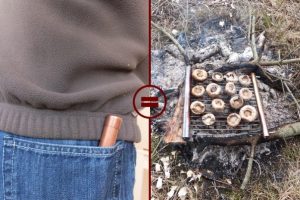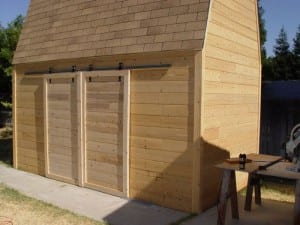Last Updated on February 22, 2024 by teamobn
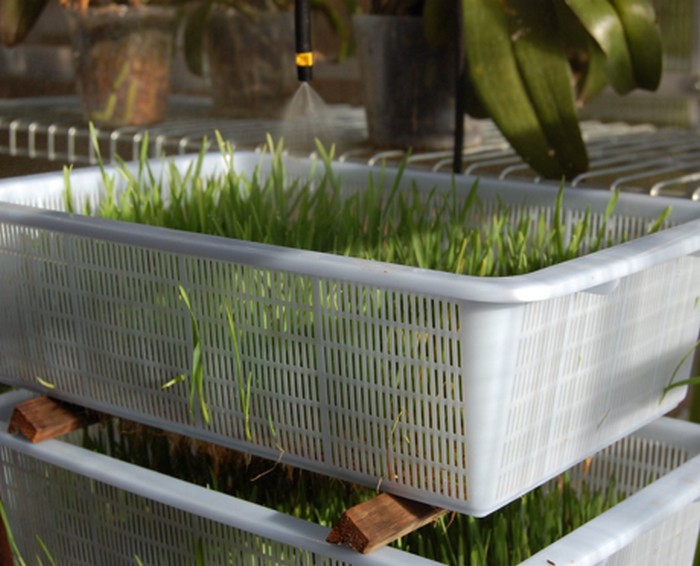
If you are raising your own livestock or looking at starting a homestead, you should also look at having your own livestock fodder growing system. Why? Because it offers lots of benefits – for you and your livestock!
One of the main benefits of growing your own fodder is that you can control what your animals are eating. You can ensure that they are getting the nutrients they need, and avoid any harmful chemicals or additives that might be present in commercial feed. Another benefit is that it can save you money in the long run. Buying commercial feed can be expensive, especially if you have a large number of animals.
Growing your own fodder can help to offset these costs. Being independent in providing food for your animals is a great way to reduce the overall expenses of raising your own livestock. You can have high-quality fodder available 365 days of the year, rain, hail, snow or searing summer heat!
Contents [show]
- 1 Reason to Install a Livestock Fodder Growing System
- 2 Building a Livestock Fodder Growing System
- 3 Nutritional Analysis of Home-Grown vs. Commercial Fodder
- 4 Water Management and Conservation in Fodder Production
- 5 FAQ on Livestock Fodder Growing System
- 5.1 What is a livestock fodder growing system?
- 5.2 Why should I consider setting up my own livestock fodder growing system?
- 5.3 What materials do I need to start my livestock fodder growing system?
- 5.4 How long does it take for fodder to be ready for harvest?
- 5.5 How much water is required for a livestock fodder growing system?
- 5.6 Can I use seeds other than barley for my fodder system?
- 5.7 Is a livestock fodder growing system suitable for all types of livestock?
- 5.8 How can I ensure the fodder I grow is nutritious?
- 6 Conclusion
Reason to Install a Livestock Fodder Growing System
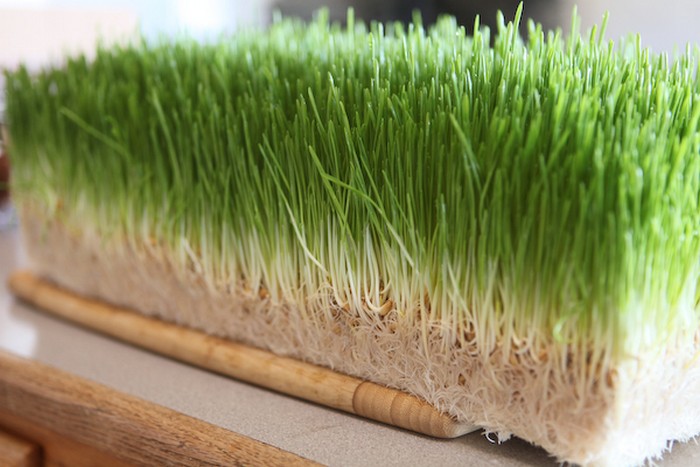
You don’t need to have a dedicated area of cultivated land or any special equipment to do it. In fact, you can achieve high yields in just a very small area. All you need is some basic knowledge of horticulture and a little bit of effort, and you can easily grow your own fodder. For instance, you can grow up to 15 lbs of fodder in a space as small as a laundry room. That is enough to feed 15-20 chickens or 3-4 milk goats a day!
There are a few things to keep in mind when setting up your growing system. First, you’ll need to choose the right type of seeds for your animals. Second, you’ll need to make sure that your room is well-ventilated, as fodder farms can produce a lot of dust. Finally, you’ll need to have a good shelving system in place so that your fodder can dry properly.
This growing system is also easy to maintain. Just an hour during the day and another 15 minutes in the evening is enough to harvest fodder and grow/manage the sprouting seeds. It really is practical for a small homestead, especially since the technique requires minimal water consumption. You can head over to the article linked below to learn how efficiently water is used!
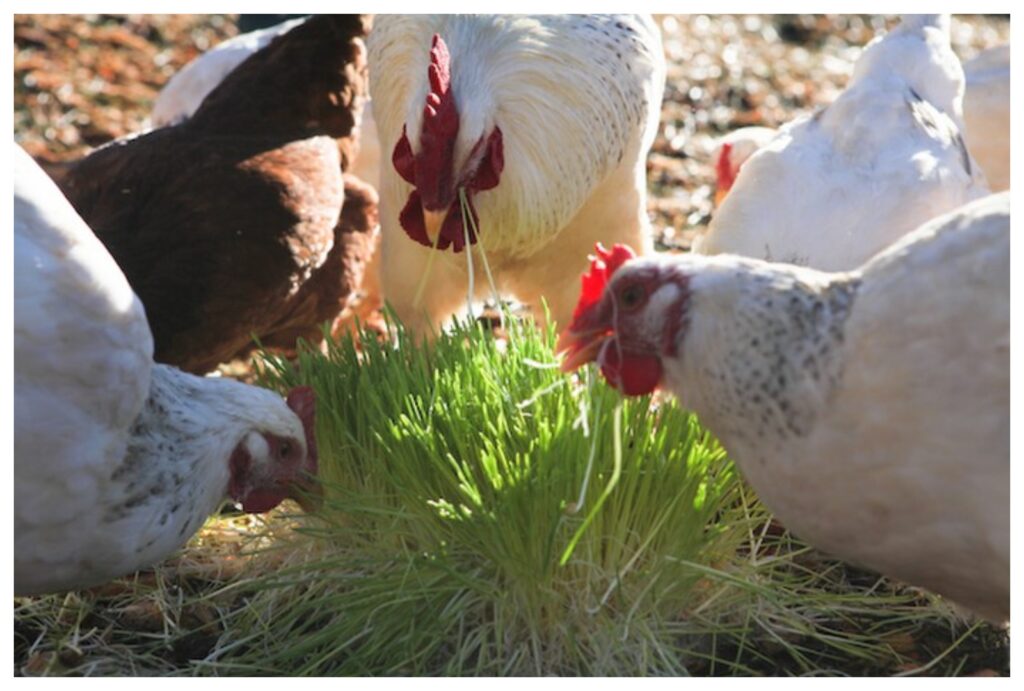
By having your own growing system you can also ensure that your animals are getting the right nutrition. Organically and hydroponically grown fodder contains more vitamins and minerals than traditional methods of fodder growth, bringing several health benefits to animals such as increases in Omega 3, amino acids and natural hormones among others.
This is due to the fact that organic and hydroponic methods of growth allow for greater control of the growing environment, resulting in a more nutrient-rich final product. In addition to the health benefits mentioned above, animals fed organic and hydroponic fodder also tend to have higher levels of immunity and resistance to disease.
Do you want fresh and healthy green feeds for your livestock 365 days a year? Then make an inexpensive fodder growing system now! 
Building a Livestock Fodder Growing System
Materials
- Barley Seeds
- Bleach
- 5 small Sprouting Tubs
- Plastic Cutting Board
- 5 Black Seedling Trays
- 3 High Plastic Dome Lids
- 2 Low Plastic Dome Lids
- Shelving System
Tool
- Drill
Instructions
Step 1: Sterilizing Equipment
- Mix a bleach solution (1 part bleach to 10 parts water) in a large container.
- Submerge the sprouting tubs, seedling trays, and plastic dome lids in the solution for at least 30 minutes to sterilize them.
- Rinse thoroughly with clean water to remove any bleach residue.
Step 2: Preparing the Seedling Trays
- Use the drill to create small drainage holes in the bottom of each black seedling tray. Space the holes evenly to ensure proper drainage.
- Place a plastic cutting board under the trays while drilling to protect your work surface.
Step 3: Soaking the Barley Seeds
- Fill the small sprouting tubs with clean water.
- Add the barley seeds to the tubs, ensuring they are fully submerged.
- Allow the seeds to soak for 8-12 hours, which initiates the germination process.
Step 4: Seeding the Trays
- After soaking, drain the barley seeds and spread them evenly across the prepared seedling trays.
- Ensure a single layer of seeds to maximize growth efficiency and airflow.
Step 5: Arranging the System
- Set up the shelving system in a location that receives indirect sunlight and has good air circulation.
- Place the seeded trays on the shelves, leaving enough space between them for air circulation and growth.
- Cover the trays with the high dome lids for the first few days to maintain humidity and encourage germination.
Step 6: Daily Maintenance
- Water the seeds lightly twice a day, ensuring the soil is moist but not waterlogged. Use clean water to avoid contamination.
- After the seeds have germinated and begun to sprout, switch to the low dome lids to allow more room for growth.
- Monitor the growth daily and remove any moldy seeds immediately to prevent spread.
Step 7: Harvesting
- The fodder will be ready to harvest in about 7-10 days when it has formed a dense mat of roots and shoots.
- Use the plastic cutting board and a sharp knife to cut the fodder into sections suitable for your livestock.
Step 8: Cleaning and Resetting
- After harvesting, clean the trays and lids thoroughly with the bleach solution to prepare for the next batch.
- Repeat the process from Step 4 to maintain a continuous supply of fresh fodder for your livestock.
Nutritional Analysis of Home-Grown vs. Commercial Fodder
The decision between utilizing a home-grown livestock fodder growing system and relying on commercial fodder is pivotal for farmers and homesteaders dedicated to sustainable and self-sufficient livestock management.
This analysis delves into the nutritional aspects of both fodder sources, offering insights into how each option impacts the health and productivity of livestock. The focus is to equip readers with information that underscores the importance of choosing the right type of fodder, emphasizing the benefits of integrating a livestock fodder growing system into their agricultural practices.
Nutritional Content and Quality
Home-Grown Fodder
Home-grown fodder, especially when produced through hydroponic systems or organic methods, typically contains higher levels of essential nutrients such as vitamins, minerals, and amino acids than traditional fodder.
For example, fodder grown in a controlled environment can be optimized for nutrient content by adjusting light, water, and nutrient levels, leading to a more nutritious feed option. This results in healthier livestock, with improved immune systems and potentially higher productivity in milk yield, growth rates, and reproduction.
Commercial Fodder
Commercially available fodder often undergoes processing and may include additives, preservatives, or fillers that do not contribute to the nutritional needs of the animals. While commercial feeds are formulated to meet the basic nutritional requirements of livestock, they might lack the freshness and the higher levels of certain nutrients that home-grown fodder can provide. Moreover, the nutritional content of commercial fodder can vary widely depending on the manufacturer and the ingredients used.
Impact on Animal Health
Home-Grown Fodder
Animals fed with fodder from a home-based livestock fodder growing system often exhibit better health outcomes. This is attributed to the enhanced nutritional profile of fresh, home-grown fodder. Increased levels of omega-3 fatty acids, natural enzymes, and antioxidants in hydroponically grown fodder, for instance, can improve the overall health and well-being of livestock, leading to a natural increase in disease resistance and productivity.
Commercial Fodder
While commercial fodder is designed to be nutritionally adequate, the long-term health effects of consuming processed feeds are a concern. The potential presence of chemicals in commercial feeds, such as pesticides and herbicides, can accumulate in the livestock over time, potentially affecting their health and the quality of animal products such as meat, milk, and eggs.
Cost-Effectiveness and Sustainability
Integrating a livestock fodder growing system can be more cost-effective in the long run. Despite the initial setup costs, the ability to produce fodder year-round reduces dependency on external feed sources, which can be subject to price fluctuations and availability issues. Furthermore, a home-grown system supports sustainability practices by minimizing waste and reducing the carbon footprint of transporting commercial feed.
The choice between home-grown and commercial fodder should consider the nutritional benefits and the broader impacts on animal health, cost, and sustainability. A livestock fodder growing system offers a viable alternative to traditional commercial feeds, providing livestock with high-quality nutrition while supporting eco-friendly farming practices.
Click on any image to start the lightbox display. Use your Esc key to close the lightbox.![]()

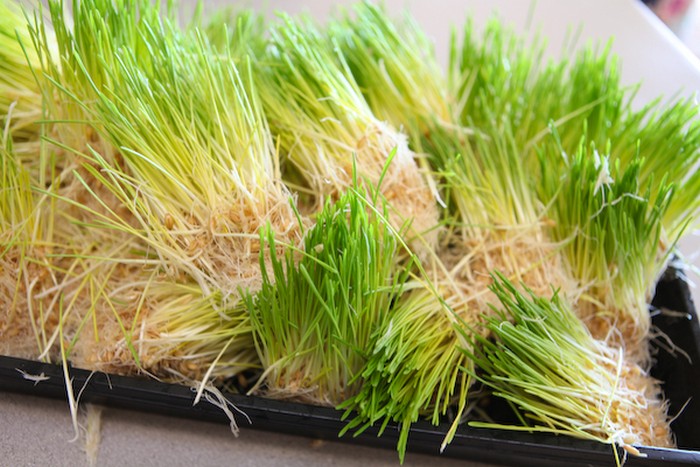
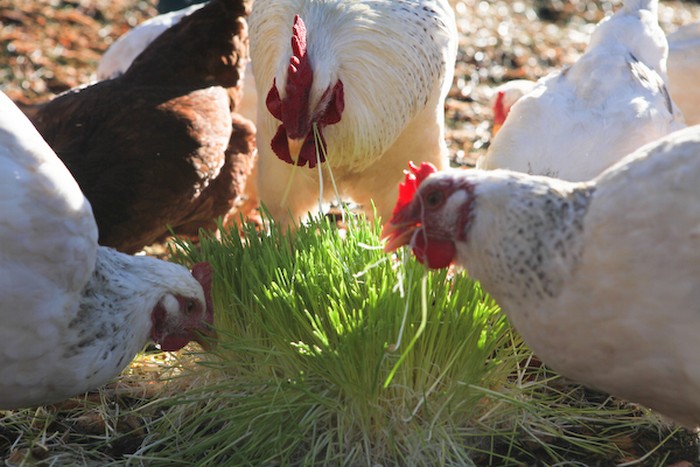
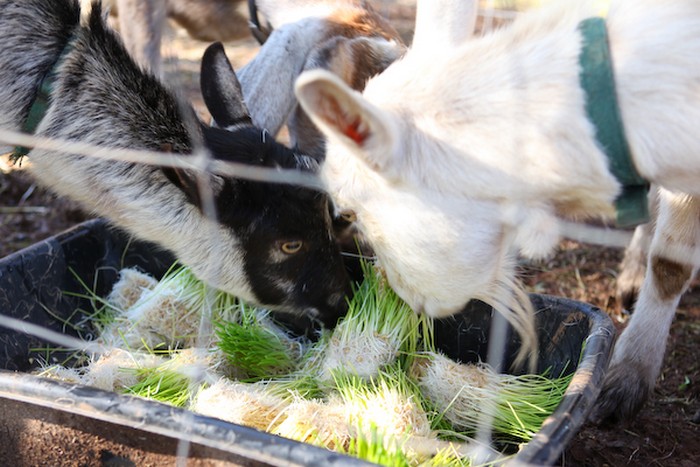
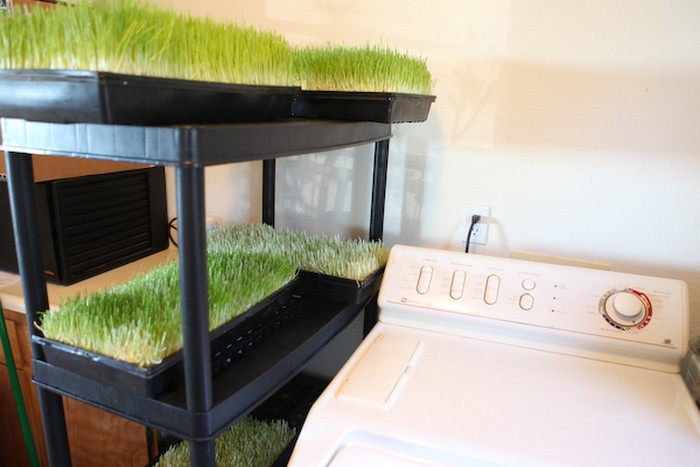
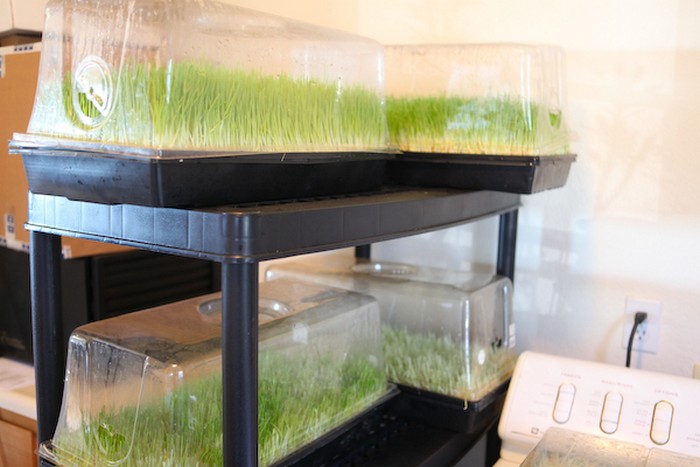
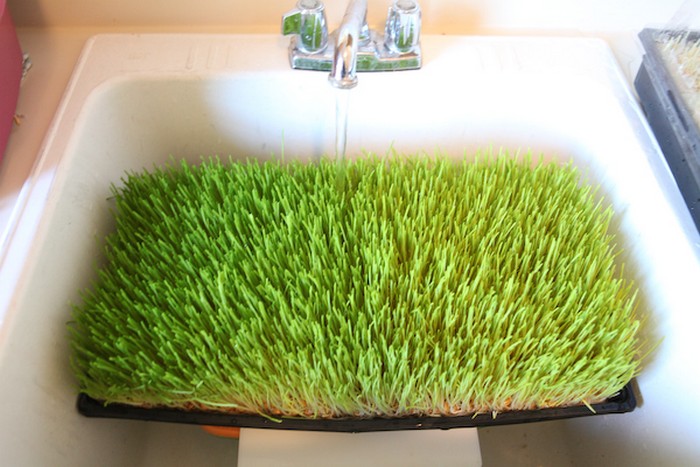

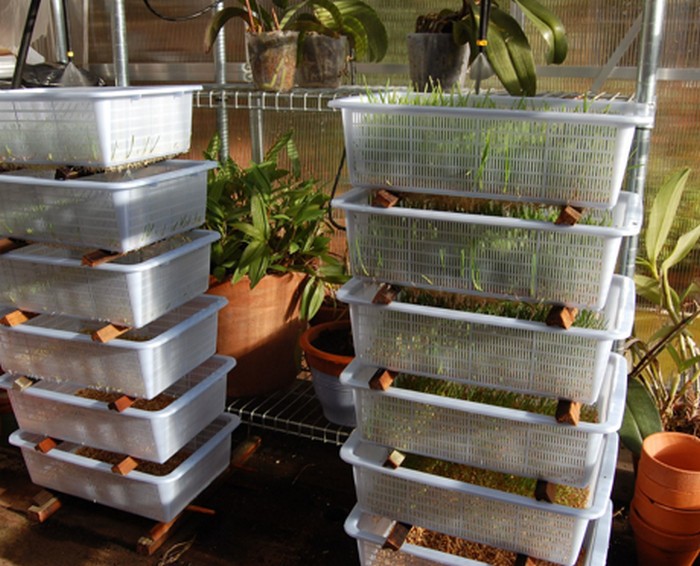
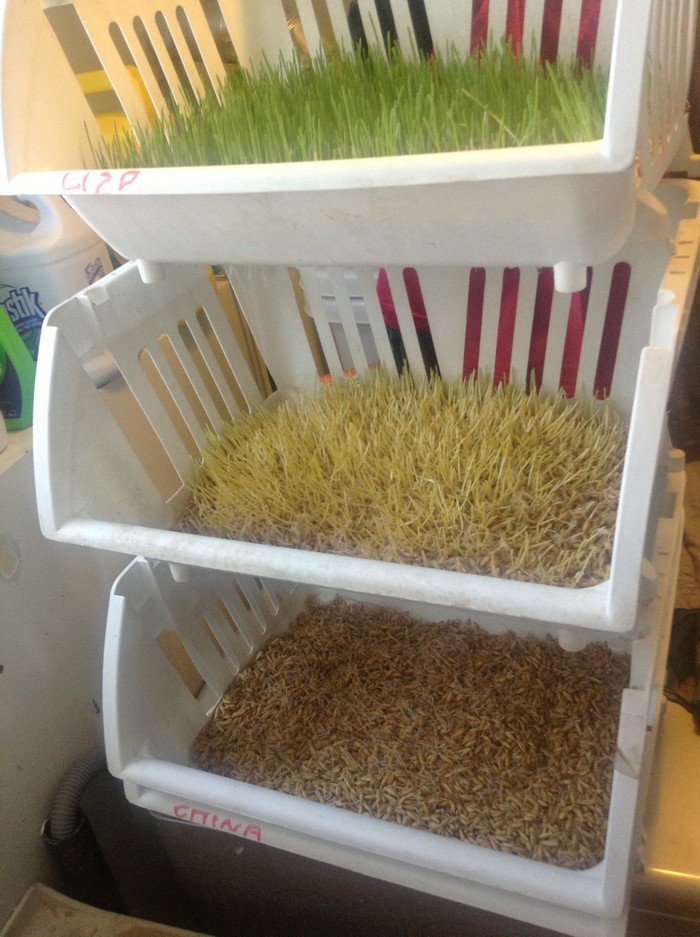
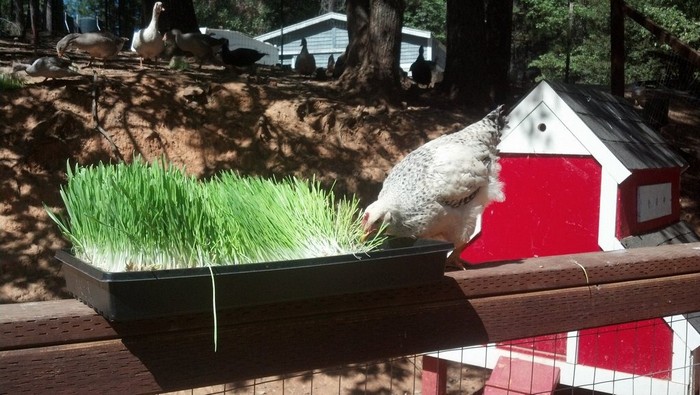
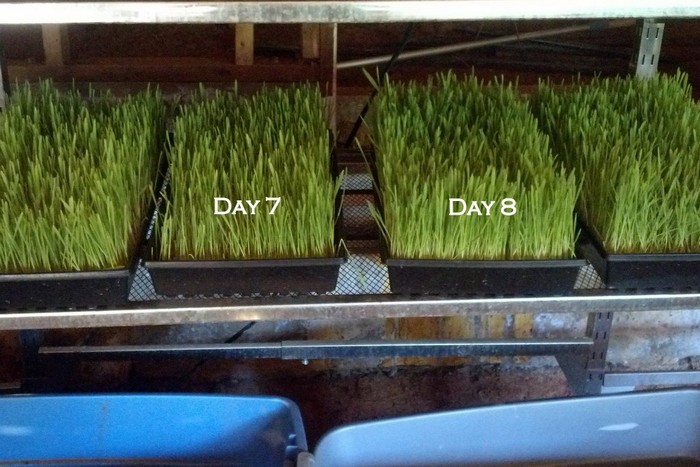
Water Management and Conservation in Fodder Production
In sustainable agriculture, water use efficiency in a livestock fodder growing system cannot be overstated. As water scarcity becomes a pressing global issue, adopting water-smart practices in fodder production is crucial. T
his section explores water management and conservation strategies in fodder production, highlighting how these practices support environmental sustainability and enhance the productivity and cost-effectiveness of livestock fodder growing systems.
Importance of Water Efficiency
Water is a finite resource, and its judicious use in agriculture is essential for the sustainability of farming operations. In livestock fodder growing systems, water management plays a pivotal role in ensuring that fodder is grown efficiently and sustainably. Efficient water use helps in minimizing operational costs and reduces the environmental footprint of fodder production, making it a key consideration for farmers and homesteaders alike.
Techniques for Water Conservation
- Recirculating Systems: One of the most effective ways to conserve water in a livestock fodder growing system is by implementing recirculating hydroponic systems. These systems reuse water multiple times, drastically reducing the amount of water needed compared to traditional irrigation methods. Recirculating systems are particularly suitable for hydroponic fodder production, where water can be enriched with nutrients and then recirculated, ensuring minimal waste.
- Hydroponic Systems: Hydroponic fodder systems represent a revolution in water efficiency for growing livestock feed. These systems recycle water and nutrients through closed-loop systems, drastically reducing water usage compared to traditional soil-based cultivation. By adopting hydroponics, a livestock fodder growing system can save up to 90% of the required water, making it an exemplary model of water efficiency in agriculture.
- Rainwater Harvesting: Capturing and storing rainwater for use in fodder production is another sustainable strategy. Rainwater harvesting can significantly reduce the reliance on municipal water supplies or groundwater. By integrating rainwater harvesting systems into a livestock fodder growing system, farmers can leverage seasonal rainfall for fodder production, enhancing water security and reducing costs.
- Drip Irrigation: For fodder systems that do require direct irrigation, such as certain outdoor or soil-based setups, drip irrigation offers a water-efficient solution. Drip irrigation delivers water directly to the root zone of plants, minimizing evaporation and runoff. This precision watering method ensures that water is used optimally, promoting healthy plant growth with less water.
- Water-Retentive Substrates: Incorporating substrates that retain moisture, such as coco coir or peat moss, into the growing medium can drastically reduce the need for frequent watering. In a livestock fodder growing system, these substrates can help maintain optimal moisture levels for fodder growth, ensuring water is efficiently used and conserved.
- Aquaponics: Combining fish farming with hydroponic fodder production can create a symbiotic environment where the waste from the fish provides nutrients for the fodder crops, and the plants filter and clean the water, which is then recirculated back to the fish tanks. This method can significantly reduce water usage in a livestock fodder growing system while producing an additional source of income or food.
- Implementing Soil Moisture Sensors: For soil-based systems, soil moisture sensors can be invaluable. These devices provide real-time data on the moisture content of the soil, allowing for precise irrigation only when necessary. By integrating soil moisture sensors into a livestock fodder growing system, water can be conserved by eliminating unnecessary watering.
- Education and Training: Finally, educating oneself and any staff involved in the operation about the importance of water conservation and efficient techniques can lead to better water management practices. Understanding the unique water needs of the fodder being grown and how to meet those needs with minimal waste is crucial for any successful livestock fodder growing system.
Monitoring and Management Tools
Adopting technology for monitoring and managing water use can lead to significant water savings in fodder production. Tools and systems that track water consumption, moisture levels in the growing medium, and environmental conditions can help in adjusting water usage to meet the exact needs of the fodder crops. Smart irrigation controllers, soil moisture sensors, and climate control systems within greenhouses or indoor growing areas are examples of technologies that can optimize water use in a livestock fodder growing system.
Benefits Beyond Water Savings
While the primary goal of these strategies is to conserve water, they also bring additional benefits. Efficient water management in a livestock fodder growing system can improve fodder quality and yield, as plants receive the optimal amount of water for growth. Additionally, reducing water usage helps lower the environmental impact of fodder production, contributing to the sustainability of the farming operation.
Effective water management and conservation are critical for the success and sustainability of a livestock fodder growing system. These practices safeguard water resources and support the overall productivity and cost-effectiveness of fodder growing operations, marking a positive step towards sustainable livestock farming.
FAQ on Livestock Fodder Growing System
What is a livestock fodder growing system?
Why should I consider setting up my own livestock fodder growing system?
What materials do I need to start my livestock fodder growing system?
How long does it take for fodder to be ready for harvest?
How much water is required for a livestock fodder growing system?
Can I use seeds other than barley for my fodder system?
Is a livestock fodder growing system suitable for all types of livestock?
How can I ensure the fodder I grow is nutritious?
Conclusion
A livestock fodder growing system offers an efficient, sustainable solution for producing high-quality feed and ensuring the health and productivity of your livestock. By adopting this system, you gain control over the nutritional content of the feed while also achieving significant cost savings and reducing environmental impact. The simplicity and scalability of the system make it accessible for farmers and homesteaders of all sizes. Integrating a livestock fodder growing system into your agricultural practices marks a positive step towards self-sufficiency and sustainable farming.

